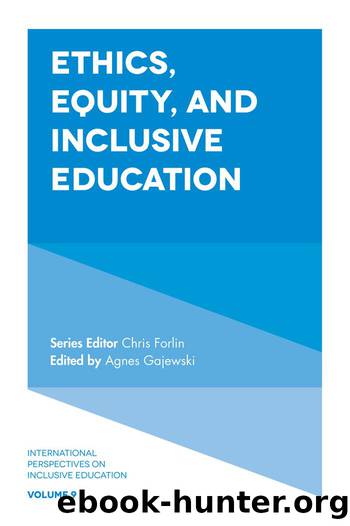Ethics, Equity, and Inclusive Education by Gajewski Agnes;Forlin Chris;

Author:Gajewski, Agnes;Forlin, Chris;
Language: eng
Format: epub
Publisher: Emerald Publishing Limited
Published: 2017-05-08T00:00:00+00:00
Fig. 2. Typical OTL Concept Map.
Even if all of these elements are in place, it cannot be assumed that OTL is provided because students with ESN often experience barriers created by the curriculum, instruction, and materials and need to learn additional skills and concepts through direct instruction. Furthermore, large-scale assessments are insufficient to inform the enacted curriculum. Given the limited concept within current research of OTL, especially in relation to the assessed curricula (e.g., Kurz, Elliott, Wehby, & Smithson, 2010), and the underlying assumptions related to access that are generally assumed within the literature (e.g., Kurz et al., 2010), Taub, McCord, and Ryndak (in preparation) have identified three major additional elements that are required to create true OTL for students with ESN: (a) Universal Design for Learning (UDL); (b) ecologically identified individualized contexts and content embedded within and across all curricula; and (c) individualized supports. In effect, the full OTL concept map for students should look something like Fig. 3.
Download
This site does not store any files on its server. We only index and link to content provided by other sites. Please contact the content providers to delete copyright contents if any and email us, we'll remove relevant links or contents immediately.
The Art of Coaching Workbook by Elena Aguilar(50773)
Trainspotting by Irvine Welsh(21467)
Twilight of the Idols With the Antichrist and Ecce Homo by Friedrich Nietzsche(18464)
Fangirl by Rainbow Rowell(9041)
Periodization Training for Sports by Tudor Bompa(8110)
Change Your Questions, Change Your Life by Marilee Adams(7578)
This Is How You Lose Her by Junot Diaz(6715)
Asking the Right Questions: A Guide to Critical Thinking by M. Neil Browne & Stuart M. Keeley(5590)
Grit by Angela Duckworth(5459)
Red Sparrow by Jason Matthews(5332)
Paper Towns by Green John(5046)
Room 212 by Kate Stewart(4975)
Ken Follett - World without end by Ken Follett(4607)
Housekeeping by Marilynne Robinson(4262)
The Sports Rules Book by Human Kinetics(4228)
Papillon (English) by Henri Charrière(4158)
Double Down (Diary of a Wimpy Kid Book 11) by Jeff Kinney(4158)
The Motorcycle Diaries by Ernesto Che Guevara(3946)
Exercise Technique Manual for Resistance Training by National Strength & Conditioning Association(3918)
